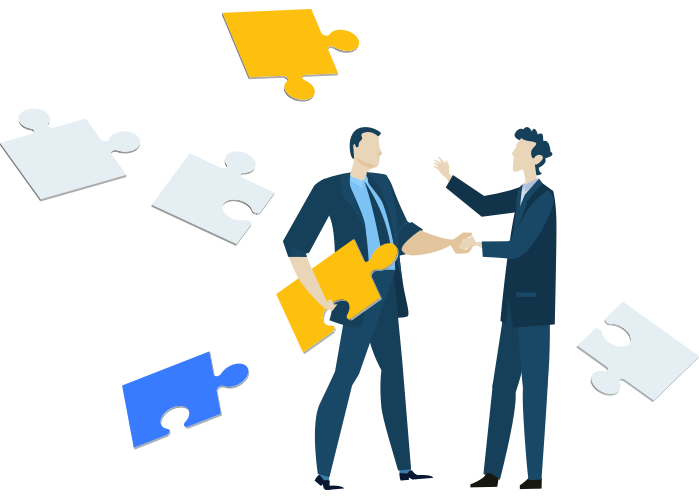Leverage customer education to ensure customer success
Customer education is one of the easiest ways to cut down on support hours for your customer success team. It’s also an easy way to bring awareness of your brand through word of mouth. It’s no secret that improved “voice of the customer” (VOC) and overall customer satisfaction scores can lead to overall improved referrals, retention and sales rates. So should your company really invest in customer education? Let's explore what means for your business first:

What is customer education?
Customer education involves a company providing their consumers with a way to learn more about their product or service. Some companies define a “customer” prior to even purchasing a product, while others simply apply it only to the people/businesses who have purchased a product.
What is the goal of customer education?
Customer education’s goal is to create trained customers, if a customer better understands a product the more likely they’re to keep that product and have a better customer experience. This also can be a huge win for the customer success team, who’s resources can oftentimes be tested from lack of training and education for the consumer.
How do I implement a customer education program?
There are a few elements that go into implementing teaching customers properly, let's explore these:
- Micro-learning AKA open learning- A simple way of improving customers knowledge is by providing a place they can learn in small sessions. Micro-learning can make the onboarding process/customer support function easier by breaking up a product into easy to consume bite size content depending on the customer's needs. Open learning can be used for learning techniques like spaced repetitions and progressive learning. Learners can access all of this learning content both on browser and mobile (iOS/Android apps. This plus all the other features allows for higher learning engagement and learning mastery.
- Social Media - Not just the popular 3, but also your own social media through learning communities and learning activity feeds. You want to create engaged customers by providing an area where they can discuss subject matter and talk with one another.
- Knowledge base - Provide a place where they can find easy answers to their questions with use cases, your customers shouldn’t always have to reach out to the support team. Knowledge bases can make customer onboarding an on-demand service, increasing customer satisfaction.
- FAQ - For less technical questions, FAQ can be utilized to answer things like “most commonly asked questions”. 5- Instructor led training - Instructor led training provides an area for you to deliver complex training or hands-on to your customer whether you do this offline or online (live session) you should have a place to manage this for things like attendance tracking, resources sharing, pre/post evaluation, assessment and linking content to an instructor led training session for reporting purposes.
- E-learning - Both mobile e-learning and desktop e-learning are typically considered a “traditional” LMS (learning management system). This can include learning paths or a training map that sets the correct learning direction for learners. It can also include assessments, evaluations, and reporting/notifications to instructors and learners. This is all standard within the EduBrite platform.
E-learning flow is typically broken into 2 parts- Authoring: Some good examples include Adobe captivate, Articulate storyline, and iSpring. While these deliver great authoring options that EduBrite can consume. EduBrite authoring also allows you to take your existing content and put it together into a course, exam or quiz.
Delivery: The second and final piece to e-learning is “delivery”. Delivery allows you to read and deliver your content to learners, this is the main purpose of an LMS. - Certification / Accreditation - When courses are completed a learner should receive a certificate that this course was completed. It should be unique to the user and course completed. Universities may only award this based on the completion of an entire degree. While companies may award this for employee training or customer training based on an individual course.
- Gamification - This is not a standard feature of an LMS but it's an important one to have. EduBrite for example has the ability to award unique badges following badge 2.0 standard. These badges have unique meta-data tied to them that can be shared with peers or on social media. Additionally we also provide the ability for a group of users to see how much credit and learning time a fellow learner has completed. The main purpose and bonus to gamification is driving engagement and overall adoption of learning.
Are there tools that provide these services?
Yes! They’re called “learning management systems” or “LMS” for short, they’re around 800 learning management systems on the market but very few provide all the services listed above. In fact, as far as we are aware- EduBrite’s “SuccessX” is the only platform that provides all of these features into one area for customer learning. EduBrite has been around since 2012 and is well established, having quite a few clients from SMB to fortune 500.
Should you invest in customer education?
We’ve talked about the benefits of customer education, so for most companies in high growth phases having an LMS makes sense. Providing customers with knowledge base, faq, learning community and open learning also saves your customer success team many precious hours to focus on more urgent issues. Customer education is a benefit to both your company and your customers, and in business win-win’s are alway a good thing.
